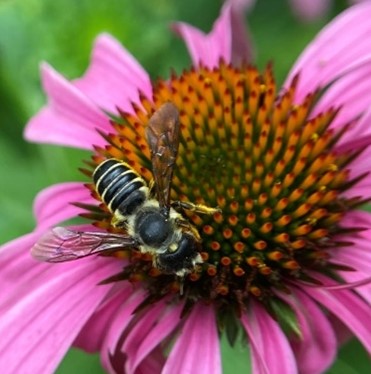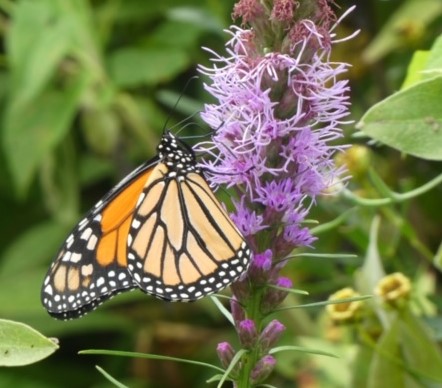Our Services > Sustainability Programs > Native Plants > Native Plants
Native Plants


Use native plants to beautify your property, lower your yard maintenance, and help the natural environment!
Native plants are those that historically and naturally occur in an area and tolerate the climate of the local environment. They also have important evolutionary relationships with the wildlife in that area. This page provides resources on planting with native plants in any type of landscape. Native plants have a multitude of environmental benefits including the following:
- They provide food and habitat to native birds, mammals, and pollinators, like the monarch butterfly, which is in decline (click here to learn about the Town's efforts to help monarchs and here to learn about protecting all pollinators)
- have extensive root systems that absorb polluted stormwater, especially when used in rain gardens
- have the ability to take in carbon dioxide and other air pollutants
- have low maintenance requirements
- do not need fertilizer since they are adapted to our local soils
- should not need irrigation once established
Native Plant Residential Rebate Program
Click HERE to be notified of the program in spring 2025.
In partnership with the Long Island Native Plant Initiative and the Nassau County Soil and Water Conservation District (NCSWCD) and with funding from the NCSWCD, the Town has offered up to $350 rebates to residents (1 per household) for installing native plants in their home landscape.
Please see additional resources on the program below including native plant list, guidance on creating and maintaining your garden, where to purchase plants, sample garden designs and more!
Click HERE to view gardens created through the rebate program over the years to get inspiration for creating your own native plant garden!
Click HERE to view the Town's Native Plant Trial Garden Results and see what plants would do best in your garden.
Resource Documents
Preparing, Designing and Maintaining Your Native Plant Garden - learn what is required to plant native plants in your yard including how to assess your planting site, choose the right plants in your design, and maintain them after planting
Plant Native for the Planet- Watch this video and step into the world of native plants- learn why they are important, how to choose the right plants and get started planting a native garden as well as how to maintain the garden for years to come.
Native Plant List - a sortable list and description of appropriate native plant species from New York to plant in your landscape
Sample Garden Designs- This document provides templates for gardens that have a variety of light and soil moisture conditions: sun & dry, sun & moist, part-sun & dry, part-sun & moist, shade, and wet. Each garden shows plant species to use and alternates. Please keep in mind these templates are from Maryland and while most of the plant species are native to NY others may not be. To see to see if a plant is a NY native visit the NY Flora Atlas.
Where to Purchase Native Plants - provides a variety of local and online native plant retailers
Native Plants in the Town- describes the many native plant gardens the Town has created on its properties with photos of each garden and information on plant species. This includes the Town's Native Plant Trial Garden. Get inspiration for your own garden!
Rain Gardens are shallow depressions in the landscape that are used to capture stormwater from a gutter downspout or sloped area. Rain gardens have many benefits such as:
- Pollution reduction: they filter out contaminants that rainwater can pick up, such as pesticides, oil, fertilizers and animal droppings, which can migrate into our nearby bays and harbors
- Aquifer replenishment: they allow water to absorb into the ground, which helps to recharge Long Island's groundwater sources where all of our drinking water comes from
- Wildlife habitat: a rain garden uses native plants
Rain Gardens a Design Guide by UConn - provides information on how to prepare your site and install a rain garden
Workshop Recordings
Landscaping for People and Wildlife 2024- this workshop details ways you can maintain your home landscape where both people and wildlife can benefit including composting, saving and protecting water resources, native plants, pollinator conservation and more!
Native Plant Gardening Workshop 2023 - learn about the benefits of native plants and how to create your own native plant garden
Rain Garden Workshop 2023 - details why rain gardens are so important and how you can construct one in your own yard
If you have any questions, please contact sustain@northhempsteadny.gov or call 311 (516-869-6311).